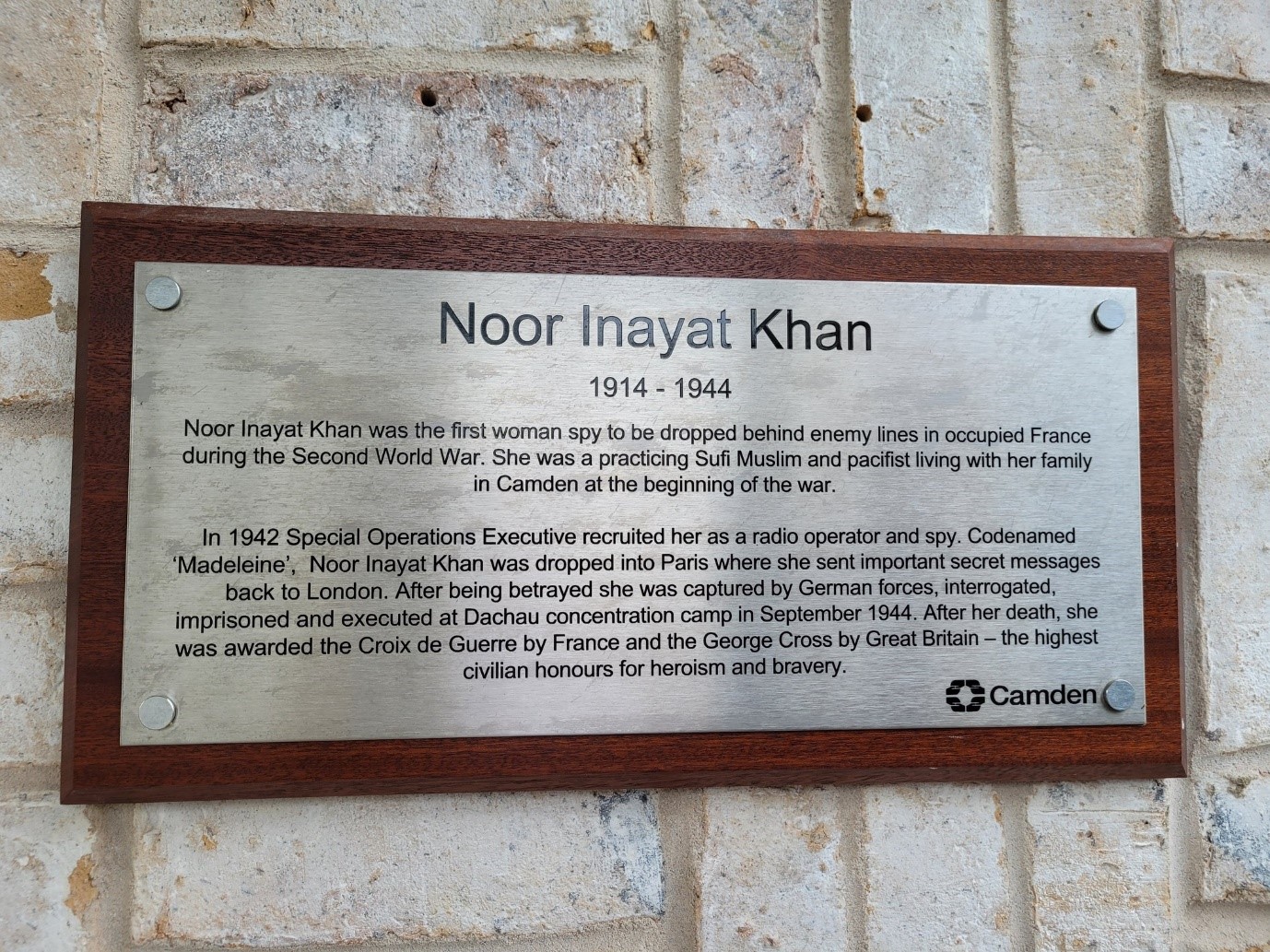Noor Inayat Khan: Housing block named after British Indian spy in London
Noor Inayat Khan was the descendant of Indian ruler Tipu Sultan
 Noor Inayat Khan / Image – X/@sharabanibasu
Noor Inayat Khan / Image – X/@sharabanibasu
A housing block in Camden County, north London, has been named after Noor Inayat Khan, a British spy of Indian origin who served during World War II.
The residents chose Khan from a ballot of shortlisted historic figures who lived in the area. Activist Antony Grey and abolitionist Mary Prince were also chosen alongside Khan for the honor.
The ‘Noor Inayat Khan House’ was unveiled at a ceremony attended by local Labour Party Member of Parliament and opposition leader Keir Starmer, Khan’s biographer Shrabani Basu and Camden Council leaders and local residents.
Basu shared pictures from the unveiling ceremony on X. “Such an honour and privilege to name a new housing block in #Camden today after #WWII heroine #NoorInayatKhan The residents chose her name. #SpyPrincess #SOE Thank you @CamdenCouncil Now there is a memorial, a #BluePlaque and a house named after her in the Borough,” Basu wrote
Such an honour and privilege to name a new housing block in #Camden today after #WWII heroine #NoorInayatKhan The residents chose her name. #SpyPrincess #SOE Thank you @CamdenCouncil Now there is a memorial, a #BluePlaque and a house named after her in the Borough. pic.twitter.com/IUT1mUM94v
— Shrabani Basu (@shrabanibasu_) December 20, 2023
“Noor Inayat Khan was the first woman spy to be dropped behind enemy lines in occupied France during the Second World War. She was a practicing Sufi Muslim and pacifist living with her family in Camden at the beginning of the war. In 1942 Special Operations Executive recruited her as a radio operator and spy,” the plaque placed at the house reads.
Khan was the descendant of Indian ruler Tipu Sultan. While the world was on the brink of WWII, Khan decided to volunteer for the Red Cross and began training. In 1940, the second year of WWII, Khan volunteered for the Women’s Auxiliary Air Force (WAAF) where she was trained to be a radio operator. She was among the first batch of women to train in this field, according to an article.
In October 1943, she was caught by the Gestapo, after being betrayed. Her address was sold to the Nazis for 100,000 francs by the sister of her circuit leader. Khan was labeled as a “highly dangerous” prisoner. She was the first woman agent to be sent to a German prison where she was shackled in chains and foot cuffs, and was beaten and tortured regularly during interrogation.
On September 11, 1944, she was transported to a concentration camp in Dachau, near Munich. Once there, she was tortured further, and on September 13, she was shot point-blank in the head by a guard named Wilhelm Ruppert.
“After her death, she was awarded the Croix de Guerre by France and the George Cross by Great Britain – the highest civilian honours for heroism and bravery,” the plaque added.




.jpg)



.png)

.webp)
.png)




Comments
Start the conversation
Become a member of New India Abroad to start commenting.
Sign Up Now
Already have an account? Login